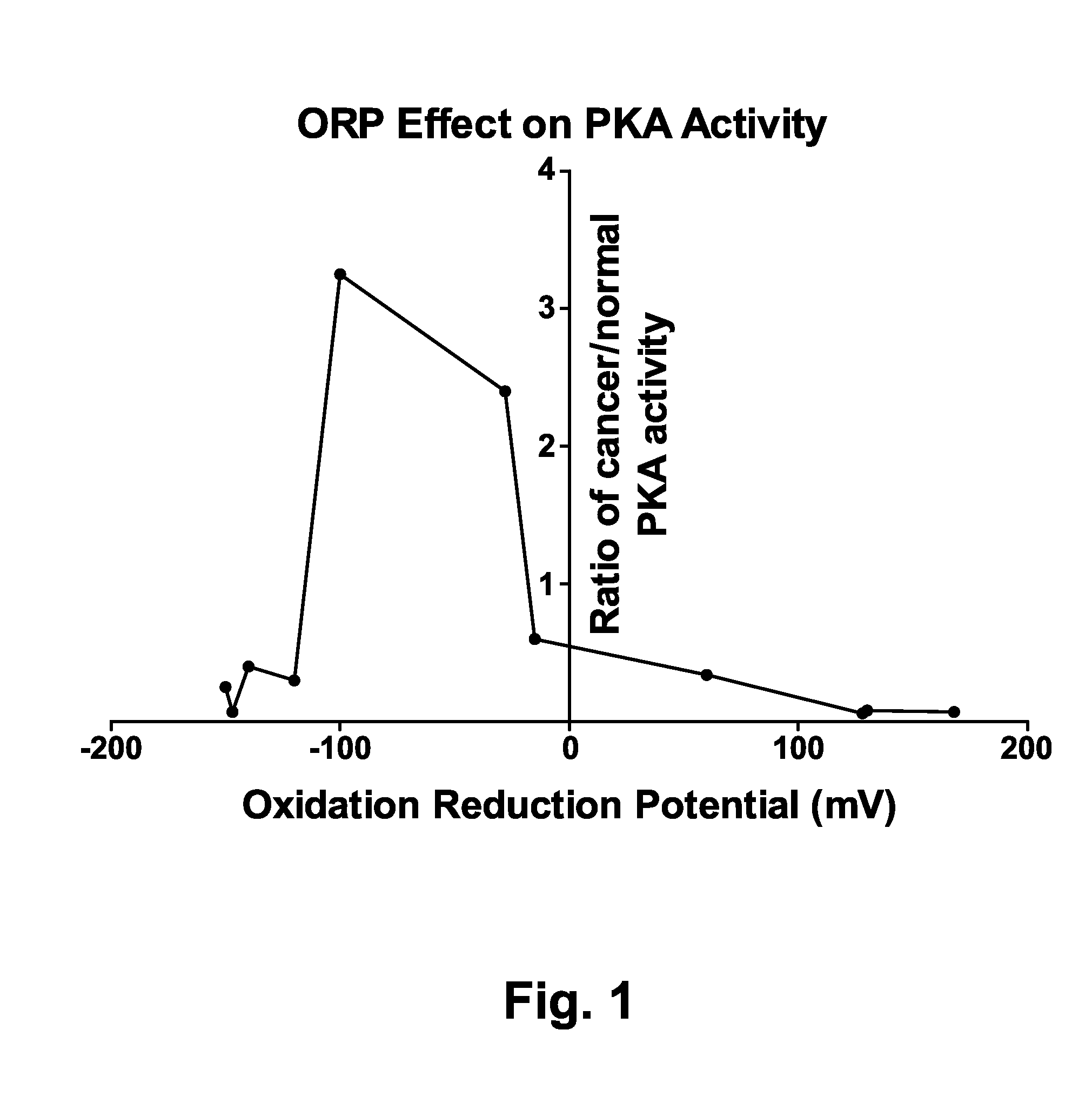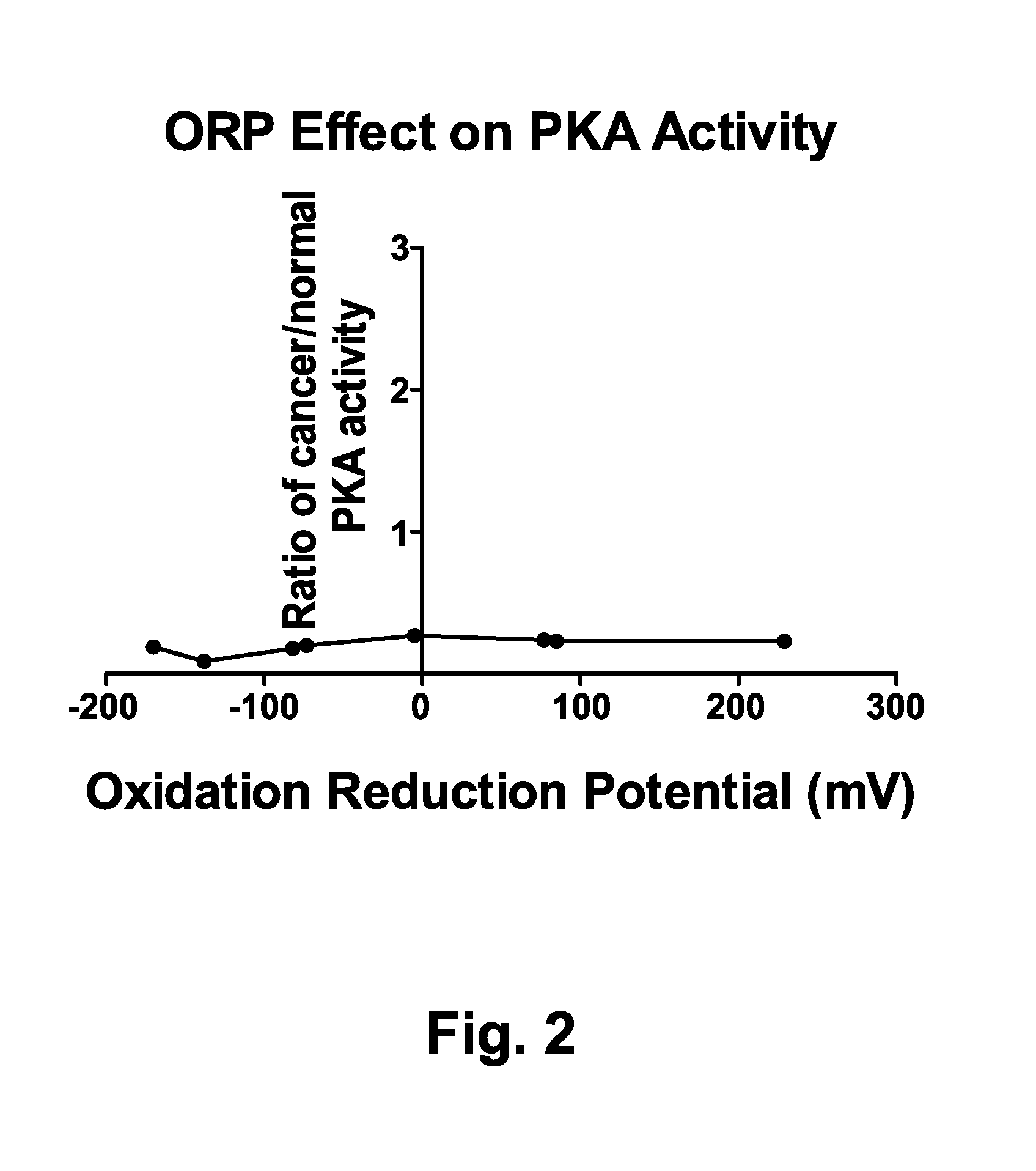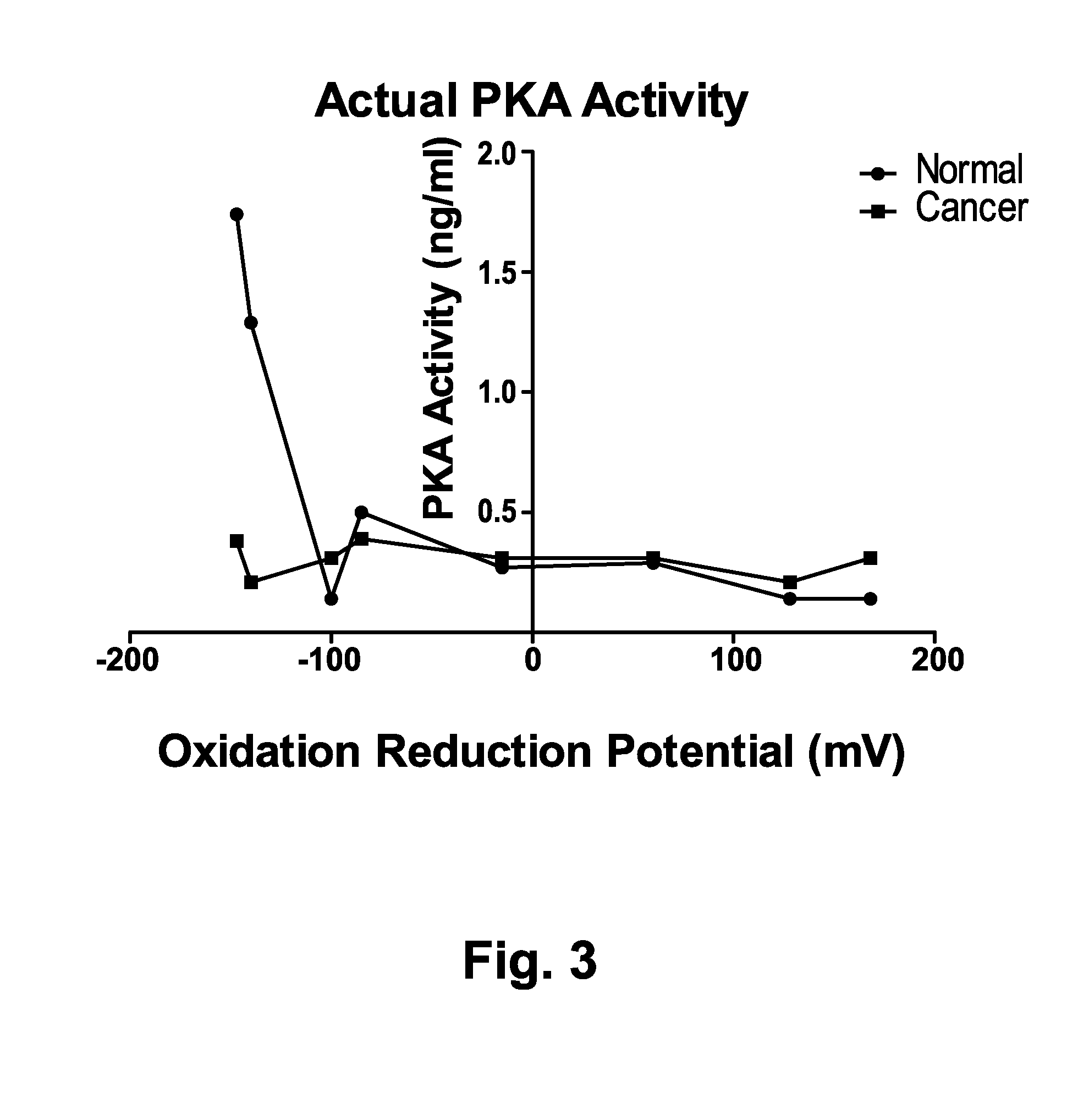Combination methods of diagnosing cancer in a patient
a cancer and patient technology, applied in the field of medical diagnostics, can solve the problems of low cost-effectiveness of conventional cancer screening assays and limited results
- Summary
- Abstract
- Description
- Claims
- Application Information
AI Technical Summary
Benefits of technology
Problems solved by technology
Method used
Image
Examples
example 1
[0080]Serum samples from patients cancer and individuals apparently without cancer were obtained from ProMedDx, LLC and from ProteoGenex. In one embodiment blood samples from prostate cancer patients and normal controls presumably without cancer were assayed for apparent PKA activity. In this assay extracellular PKA in samples was mixed with a defined peptide used as a substrate. The substrate peptide was bound to the wells of the microtiter assay plate. Phosphorylation of the peptide was detected using biotinylated phosphoserine antibody, which was in turn was detected in an ELISA format using peroxidase-conjugated to streptavidin. Detection of the bound peroxidase was established using a color-producing peroxidase substrate included in the assay kit. Bovine PKA catalytic unit was used at varying concentrations to develop a standard activity curve. The detail of the assay protocol is described below.
[0081]1. Reference: Kit Instructions
[0082]2. Materials[0083]a. MESACUP Protein Kina...
example 2
[0138]PKA activities were determined using the procedure described in Example 1 with the exception that oxidant addition, reductant addition, or no addition was made to the reaction buffer. Samples were not preincubated in sample buffer, but were incubated for 5 minutes at 25 C in reaction buffer with shaking at 750 rpm prior to adding the reaction mixtures to the assay plate wells.
[0139]The oxidation-reduction potential (ORP) of the reaction buffers was measured using a platinum redox probe. ORPs are expressed in mV. The apparent PKA activity for samples from cancer patients relative to normal samples were plotted for various ORP value solutions. With a shorter treatment with oxidant or reductant (FIG. 2) there is lower overall activity observed in the samples and the level of apparent PKA activity of the cancer patient samples relative to those from normals is consistently low (below 0.4:1)
example 3
[0140]Samples were treated as in example 1. In one set of reaction mixes NaF was added at a concentration of 2 mM. NaF is a nonspecific inhibitor of phosphatases. A reaction run with NaF inhibitor provides a measure of actual PKA activity. FIG. 3 shows that with phosphatase inhibition, the actual PKA activity in samples from cancer patients varied little with changes in redox conditions. In normal subjects with phosphatase inhibition however, actual PKA activity was reduced by about 50% overall and the PKA was still subject to regulation by redox conditions. This demonstrates the complex interplay of enzyme activities and redox conditions that control apparent PKA activity and that controls the relationship between apparent PKA activity levels in cancer patients and those individuals apparently without cancer. FIG. 4 shows the ratio of apparent PKA activity (cancer subjects / normal subjects) as a function of oxidation reduction potential in reactions containing NaF. The ratio of canc...
PUM
 Login to View More
Login to View More Abstract
Description
Claims
Application Information
 Login to View More
Login to View More - R&D
- Intellectual Property
- Life Sciences
- Materials
- Tech Scout
- Unparalleled Data Quality
- Higher Quality Content
- 60% Fewer Hallucinations
Browse by: Latest US Patents, China's latest patents, Technical Efficacy Thesaurus, Application Domain, Technology Topic, Popular Technical Reports.
© 2025 PatSnap. All rights reserved.Legal|Privacy policy|Modern Slavery Act Transparency Statement|Sitemap|About US| Contact US: help@patsnap.com



